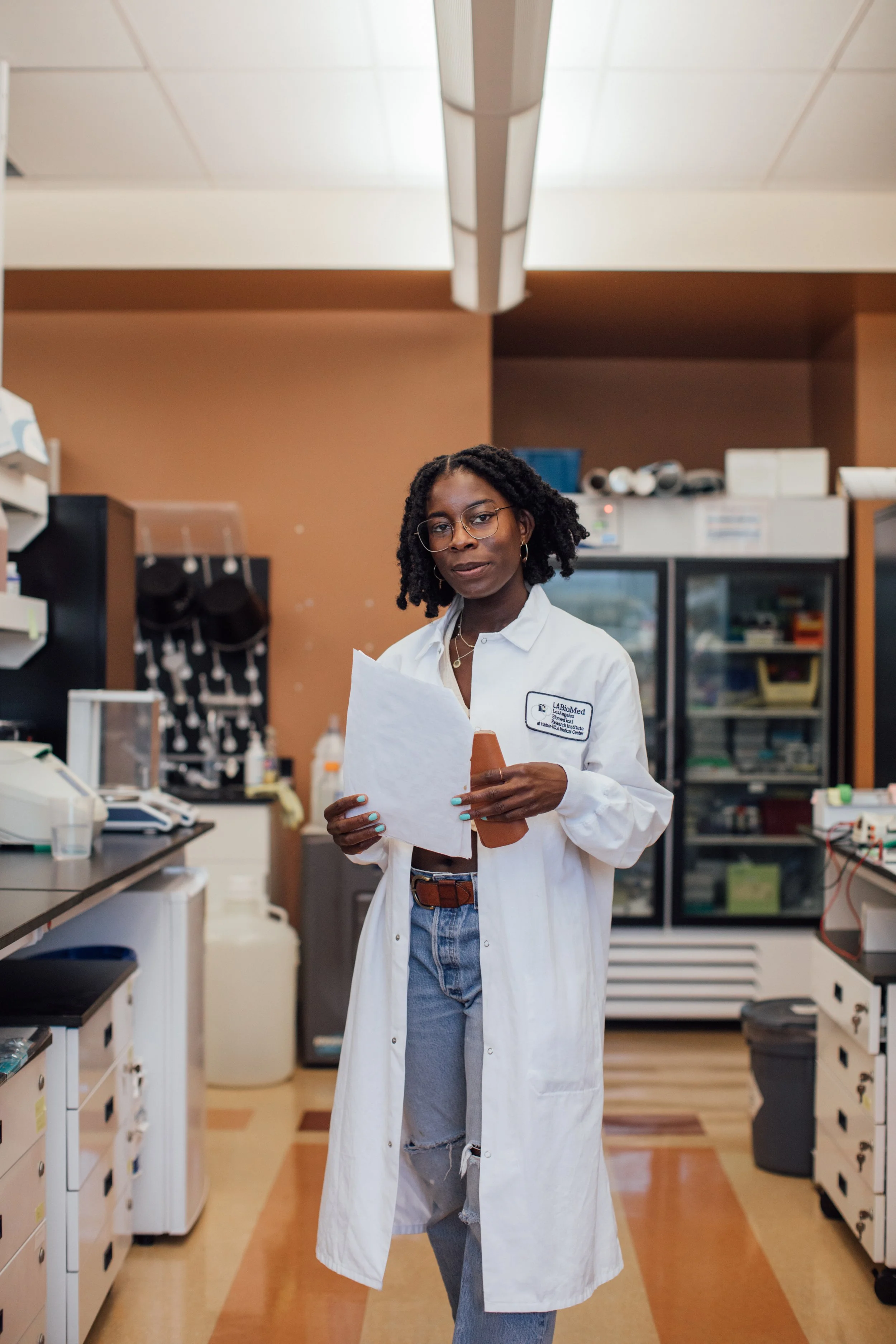Research
Neuroscience & Stem Cell Biology
I’ve spent fifteen years studying the brain and ten years researching it. Over a decade of research has taught me that learning is never done. I’ve focused my interest on developing novel gene and stem cell therapies to treat neurodegenerative diseases in children, but my curiosity has led me in all sorts of directions.
Areas of Expertise
Cell culture (induced pluripotent stem cells (iPSCs), neuronal stem cell (NSC) differentiation, organoid culture)
CRISPR-Cas9 gene editing
Intracranial AAV-mediated gene therapy
Intracranial Stem cell transplantation
Animal Behavior
Immunohistochemistry and immunocytochemistry
Microscopy (including light, fluorescent, confocal)
Research Experience
Postdoc at The Lundquist Institute at Harbor-UCLA Medical Centre, Los Angeles
2016 – 2022
Leading two projects, developing novel neural stem cell therapies for Sanfilippo syndrome, an incurable childhood lysosomal storage disorder caused by enzyme deficiencies that primarily affect the brain.
Oral presentation at American Society of Gene & Cell Therapy, 2020
Oral presentation at WORLD Symposium 2018, San Diego
Education
2012 – 2016: PhD Neuroscience, King’s College London
Investigating the potential use of virus-mediated gene therapy for the treatment of Batten disease, a currently incurable and fatal pediatric neurodegenerative disorder.
2008 – 2009: MSc Neuroscience, King’s College London
Dissertation project: Studying endogenous cell proliferation and differentiation after implantation of immortalized neural stem cells into the ischemic rat brain.
2003 – 2006: BSc Human Science, King’s College London
Dissertation project: Exploring the phenomenology of synaesthesia and investigating how a stimulus in one sensory modality can induce a sensory experience in an additional modality where normally they remain separate.
Published Papers
Pearse, Y., Clarke, D., Kan, S. H., Le, S. Q., Sanghez, V., Luzzi, A., Pham, I., Nih, L. R., Cooper, J. D., Dickson, P. I., & Iacovino, M. (2022). Brain transplantation of genetically corrected Sanfilippo type B neural stem cells induces partial cross-correction of the disease. Molecular therapy. Methods & clinical development, 27, 452–463. https://doi.org/10.1016/j.omtm.2022.10.013
Our findings suggest that genetically engineered iNSCs can be used to effectively deliver the missing enzyme to the brain and treat Sanfilippo type B-associated neuropathology.
Pearse, Y., & Iacovino, M. (2020). A Cure for Sanfilippo Syndrome? A Summary of Current Therapeutic Approaches and their Promise. Medical research archives, 8(2), 10.18103/mra.v8i2.2045. https://doi.org/10.18103/mra.v8i2.2045
While enzyme replacement therapy and gene therapy are the most developed therapies for Sanfilippo syndrome, we highlight the work that needs to be done to bring us closer to a real treatment for these devastating diseases.
Clarke, D., Pearse, Y., Kan, S. H., Le, S. Q., Sanghez, V., Cooper, J. D., Dickson, P. I., & Iacovino, M. (2018). Genetically Corrected iPSC-Derived Neural Stem Cell Grafts Deliver Enzyme Replacement to Affect CNS Disease in Sanfilippo B Mice. Molecular therapy. Methods & clinical development, 10, 113–127. https://doi.org/10.1016/j.omtm.2018.06.005
Our findings suggest that genetically engineered neural stem cells could potentially be used to deliver enzymes and treat Sanfilippo syndrome type B in children.
Macauley, S. L., Wong, A. M., Shyng, C., Augner, D. P., Dearborn, J. T., Pearse, Y., Roberts, M. S., Fowler, S. C., Cooper, J. D., Watterson, D. M., & Sands, M. S. (2014). An anti-neuroinflammatory that targets dysregulated glia enhances the efficacy of CNS-directed gene therapy in murine infantile neuronal ceroid lipofuscinosis. The Journal of neuroscience: the official journal of the Society for Neuroscience, 34(39), 13077–13082. https://doi.org/10.1523/JNEUROSCI.2518-14.2014
Our study showed that an anti-inflammatory drug (MW151) can attenuate seizure susceptibility in a model of a childhood brain disease called Infantile neuronal ceroid lipofuscinosis, but is most effective when used in conjunction with a therapy that targets the primary genetic defect.
Sondhi, D., Scott, E. C., Chen, A., Hackett, N. R., Wong, A. M., Kubiak, A., Nelvagal, H. R., Pearse, Y., Cotman, S. L., Cooper, J. D., & Crystal, R. G. (2014). Partial correction of the CNS lysosomal storage defect in a mouse model of juvenile neuronal ceroid lipofuscinosis by neonatal CNS administration of an adeno-associated virus serotype rh.10 vector expressing the human CLN3 gene. Human gene therapy, 25(3), 223–239. https://doi.org/10.1089/hum.2012.253
Our data demonstrates an effective gene therapy strategy for a genetic childhood storage disorder called Juvenile neuronal ceroid lipofuscinosis disease and other diseases in this category.
Hassani, Z., O'Reilly, J., Pearse, Y., Stroemer, P., Tang, E., Sinden, J., Price, J., & Thuret, S. (2012). Human neural progenitor cell engraftment increases neurogenesis and microglial recruitment in the brain of rats with stroke. PloS one, 7(11), e50444. https://doi.org/10.1371/journal.pone.0050444
Our study demonstrates that adult neurogenesis in normal conditions is limited, but increases in response to stroke. We further show that stem cell transplantation after stroke leads to the maintenance of neurogenesis. Interestingly, the preservation of neurogenesis after transplantation is preceded and accompanied by a high rate of proliferating microglia, the brain’s immune cells, suggesting that microglia might mediate in part the effect of stem cell transplantation on neuronal proliferation in ischemic stroke conditions.


